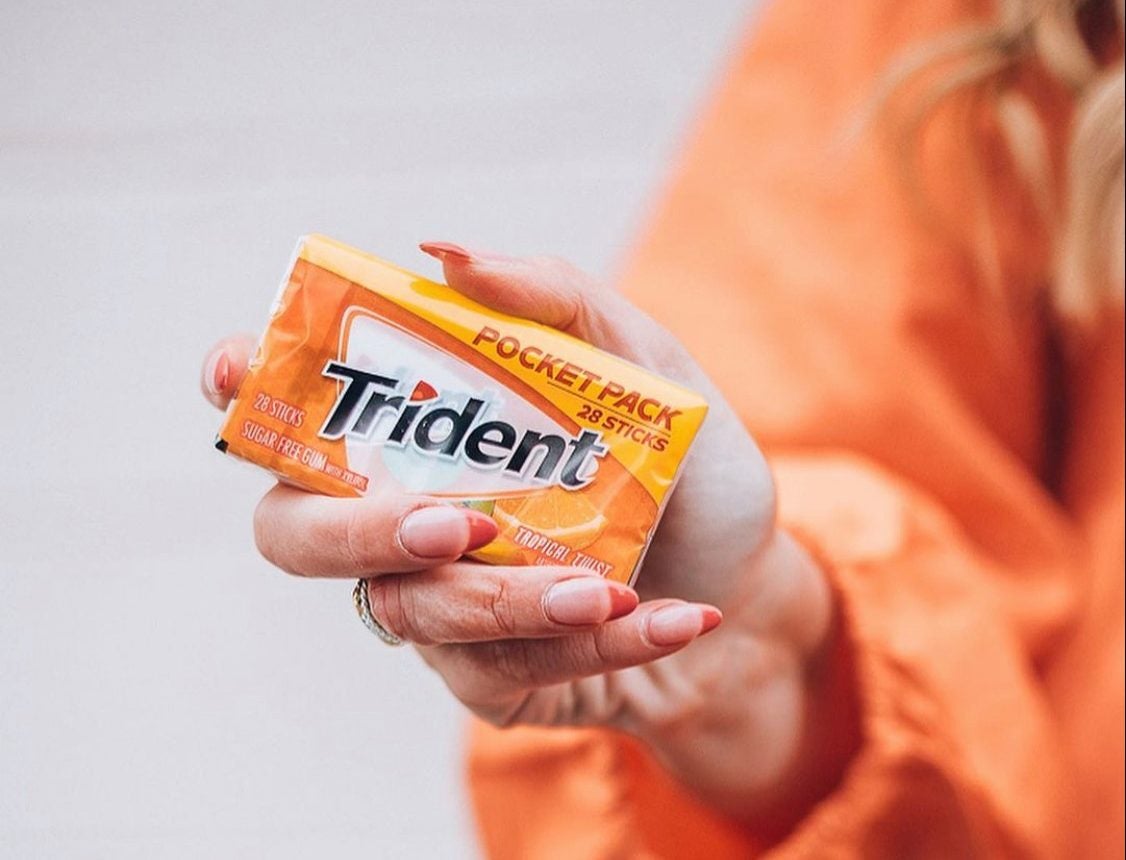
The US snacks giant is undertaking a review of its position in the chewing-gum market, which has been hammered by the Covid-19 pandemic, reducing mobility and on-the-go sales.
Speaking at an investor conference yesterday (2 June), Mondelez CFO Luca Zaramella said the company is analysing the future of its chewing-gum business in countries that account for 5% of the company’s revenue.
“As we said many times, the number one priority we have at this point in time is to fix the business and allowing the business to return back close to 2019 levels, i.e. pre-Covid levels,” Zaramella said.
“Obviously, it is a business that has been disproportionately impacted by Covid, given the fact that it is consumed for the vast majority on-the-go.
“It has clearly a meaningful presence in developing markets, allowing us to get scale. For developed markets specifically, we are assessing whether there are other options than keeping and retaining the business. It is 5% of total revenue.”
Zaramella added: “From a profit standpoint, given the reduction in size that we have faced in 2020, it is pretty much in line with the rest of the company at this point, so not disproportionately higher. But, as we said, we have to fix the business and then potentially assess whether there are other avenues for us to create more value for Mondelez shareholders.”

US Tariffs are shifting - will you react or anticipate?
Don’t let policy changes catch you off guard. Stay proactive with real-time data and expert analysis.
By GlobalDataMondelez on recent Chipita deal
The Mondelez finance chief was speaking at a virtual conference held by US-based investment bank AllianceBernstein alongside the Cadbury maker’s CEO, Dirk Van de Put.
Asked to comment on Mondelez’s acquisition of Greece-based bakery-products supplier Chipita, announced last week, Van de Put said the new asset met his company’s “three big priorities” when it comes to M&A.
Mondelez wants to add businesses to its portfolio that fill “white spaces” in channels and geography. The company wants to enter “adjacencies”, product areas close to its existing range. Thirdly, the Oreo owner wants to buy “technologies or business models that we currently do not have in the company”, Van de Put said.
“Chipita, really – it’s all three but, in the first place, it’s obviously a play to get into adjacencies, particularly cakes and pastries,” he explained.
“It’s a US$65bn addressable market. Chipita is a $600m player in there, growing high-single-digits for the last years. Together with Give & Go and some of the other launches that we did organically, we are now the third global player in this space. It’s a very fragmented market, which we think is a huge opportunity for us.”
Mondelez snapped up Canada-based in-store bakery supplier Give & Go Prepared Foods Corp. last year.
“Overall, I would say, the opportunity here really skews to emerging markets and develop this range because, at its core, it’s a packaged cake or packaged pastry. It’s a meal replacement or a breakfast opportunity,” Van de Put said of the Chipita deal. “And we think there’s still opportunity to launch some new products under their umbrella of what they currently are doing.”
The Mondelez boss also set out the “synergies” the company expects to see from the Chipita deal.
“It’s a full integration. So, we see significant revenue and cost synergies related to this,” he told the conference. “This can be done with our sales force or their sales force. This can be produced in some of our plants. They, of course, have their own plants, but there’s a lot of similarities here.
“And the revenue synergies will come from distribution expansion. Because we now have more critical mass in central and eastern Europe, our products will benefit as well.
“We could improve their distribution, obviously, but then also bringing their products to the rest of the world under our brand. So, imagine a range of cakes and pastries under the Lu brand in France or in the rest of Europe, or having chocolate croissants in central Europe with the Milka brand, as an example of how we think about the revenue synergies.”



